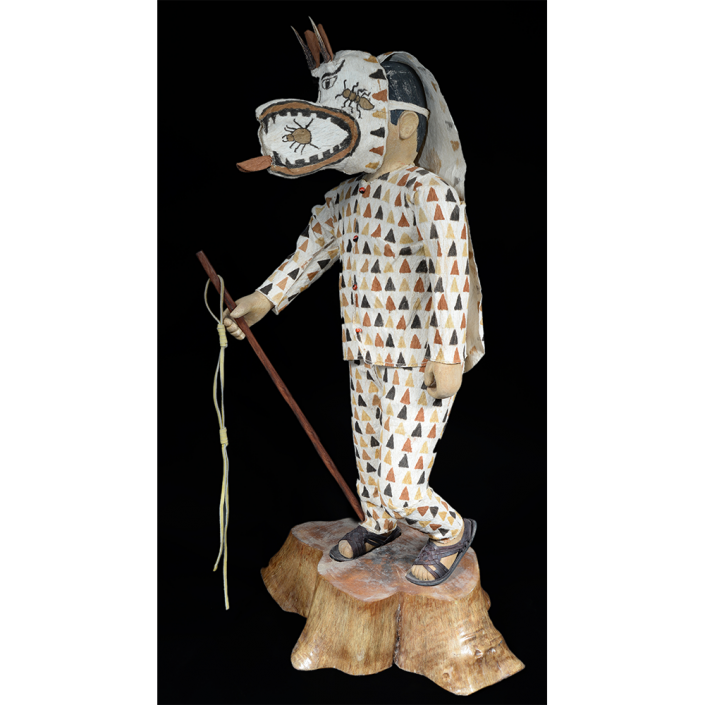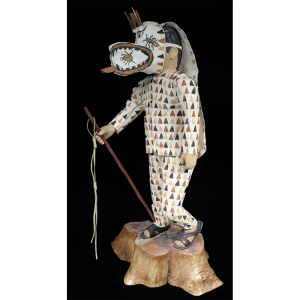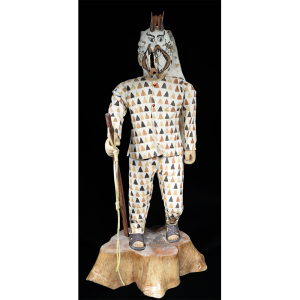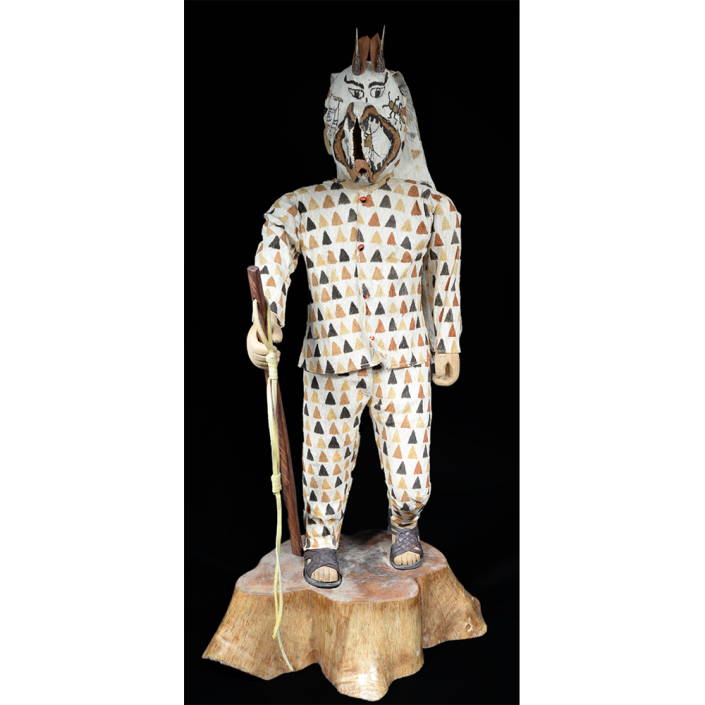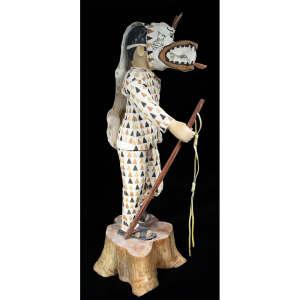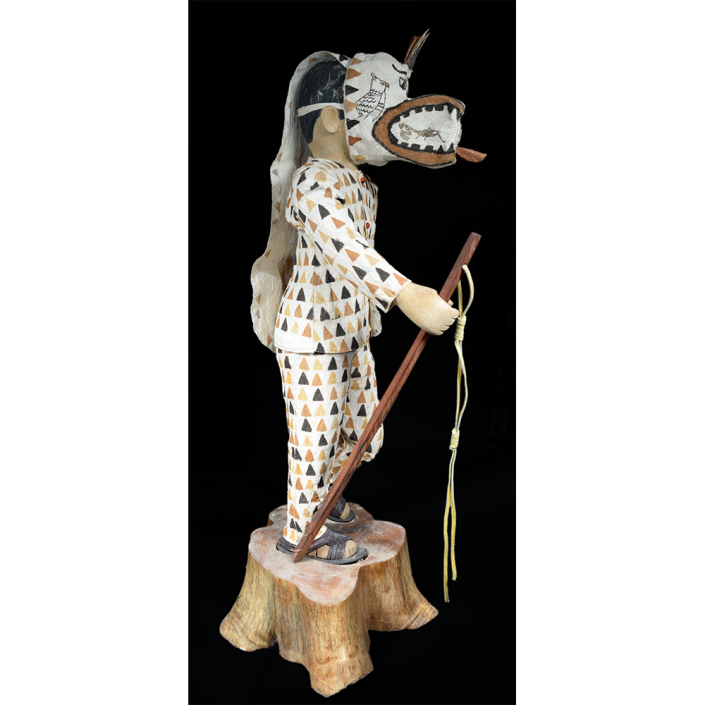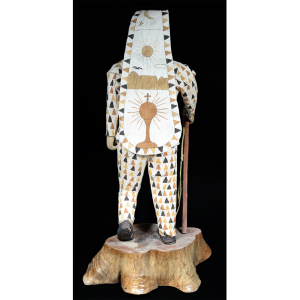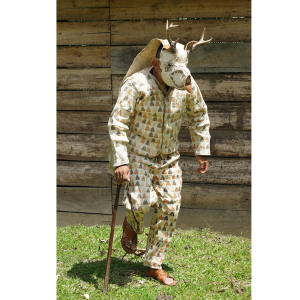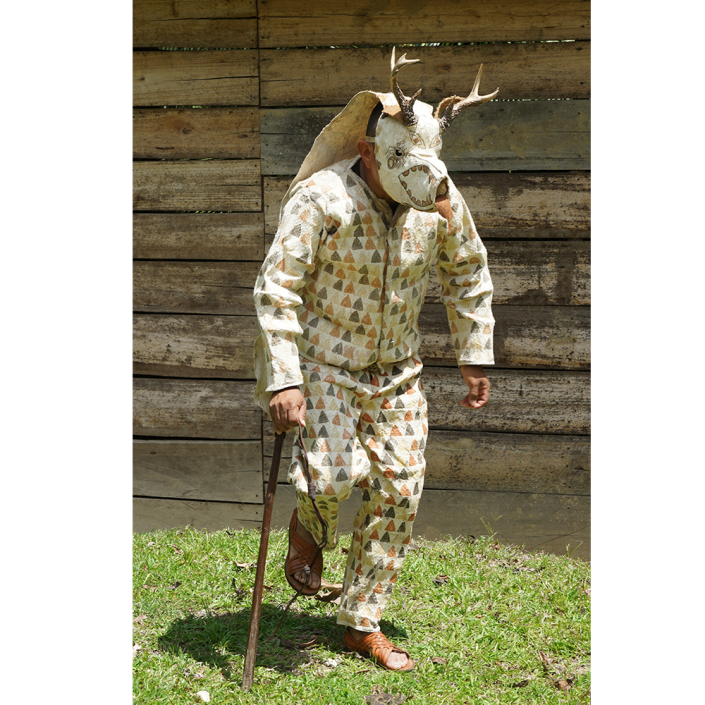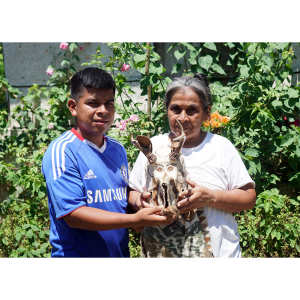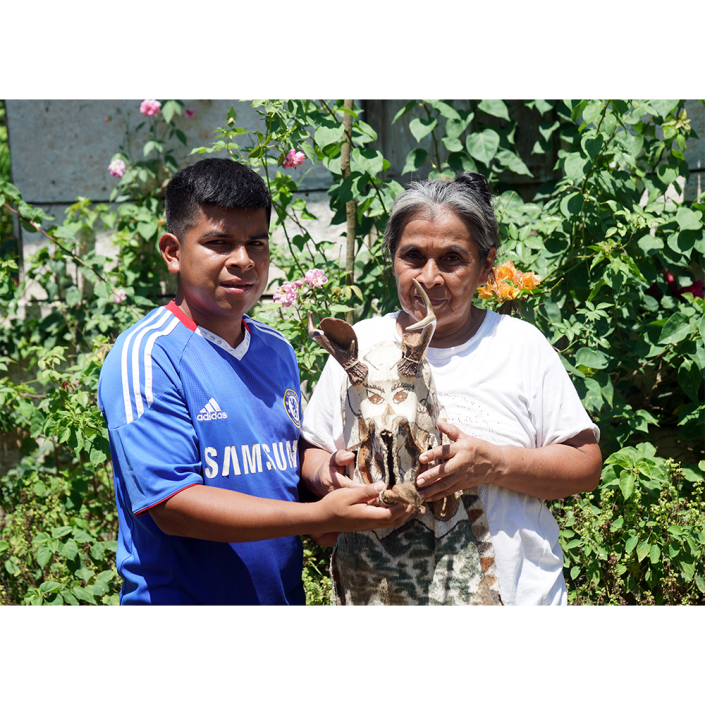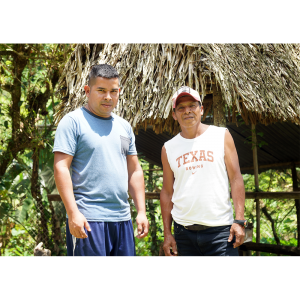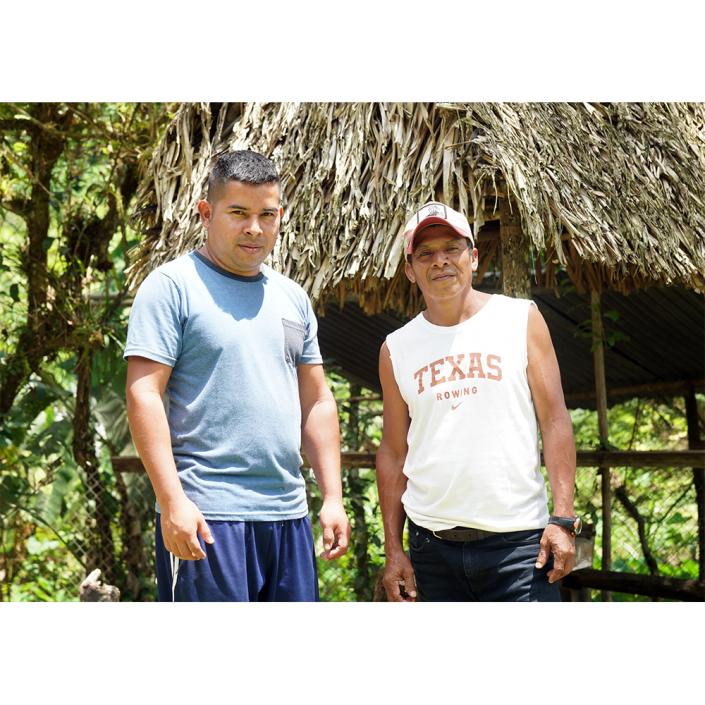TITLE: Guaimíe Cucuá Devil Mask (Child’s)
TYPE: face mask with pañoleta; costume; whip
GENERAL REGION: Latin America
COUNTRY: Panama
SUBREGION: Coclé
ETHNICITY: Guaimíe (Ngobe-Buglé)
DESCRIPTION: Cucuá Devil Mask and Costume for Child
CATALOG ID: LAPA008
MAKER: María José Rodríguez (San Miguel Centro, 1955- ); Gabriel Morán (San Miguel Centro, 1966- ); Julio Ovalle (San Miguel Centro, 1990- )
CEREMONY: Danza de los Diablos (Dance of the Devils)
FUNCTION: Celebration; Entertainment
AGE: 2018
MAIN MATERIAL (mask): tapa cloth from white Cucuá tree bark
OTHER MATERIALS (mask): tapa cloth from red Cucuá tree bark; Vejuco Verde stick frame; Pita palm string; wild boar jaw; white-tailed deer antlers; vegetable dyes
MAIN MATERIAL (costume): tapa cloth from white Cucuá tree bark
OTHER MATERIALS (costume): Pita palm string; vegetable dyes; cacique seed buttons, leather sandals; cacique wood stick with leather strap; mounted on a balsa wood figure with vegetable dyes and hardware
The Guaimíe (today called Ngobe-Buglé) people inhabit the north-central region of Panama. Although they have largely become mixed in race and ethnicity, those living in the Coclé region have recently revived their traditional dance, today known as the Danza de los Diablos (Dance of the Devils). The dance actually is a form of worship of traditional animist gods; the reference to “devils” was bestowed by Catholic missionaries, who equated all indigenous religions in Latin America as “devil worship.”
The dance is held every March and is performed in large groups of both adults and children, to the music of violin, drum, rattle, and guitar. Dancers wear full suits made of cloth made from pounded bark of the Cucuá tree, decorated with symbols and a triangular motif that represents the scales of the snake-god formerly worshiped by the indigenous people. They carry a whip made of a sturdy cacique wood pole and leather straps, and as they dance they shout out invocations of the nature spirit they represent. The masks and costumes are made entirely from natural materials found locally. Even the paints are made from vegetable dyes, with guaymi leaves providing the red tint, turmeric the yellow, mucuna vine seeds (“deer-eye beans”) the black, and chile pepper leaves the green. Buttons are made from seeds from the cacique tree.
This mask and full costume were made for a child dancer. A Guaimíe wood carver created the life-sized model for the Museum’s display.
Click above to watch a short documentary film about the Cucuá devils of Panama.
